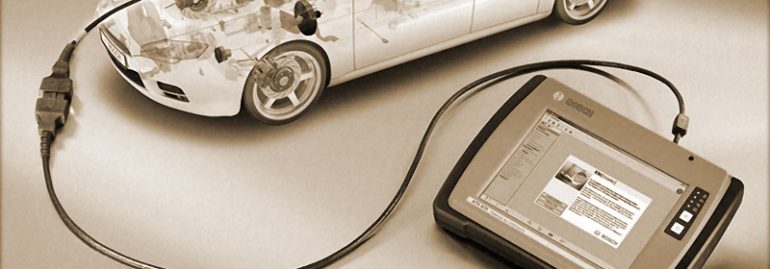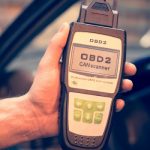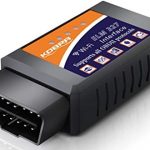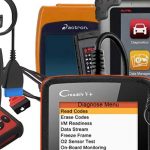
OBD-II is a standardized gateway to your vehicle’s computer. Traditionally, this reader required a long cable to connect to your vehicle. The Carly Universal Adapter is a modern OBD2 reader that works with virtually every car brand in the world. You can connect your phone via Bluetooth or WiFi to your OBD reader. You can also use it with telematics devices such as your smartphone.
OBD-II is a standardized gateway into your vehicle’s computer
OBD-II stands for On-board Diagnostics and is a standardized gateway to your car’s computer. A car’s computer communicates with an OBD-II device, which is accessible by a special adapter. A diagnostic tool that uses OBD-II technology can scan the vehicle’s computer for information and trouble codes. These tools are normally expensive, but you can now buy them for a reasonable price.
An OBD-II device uses a 16-pin diagnostic connector, also known as a J1962. Pins 4 and 5 connect to the ground, while pins 6 and 14 connect to CAN Bus signals. Pins 7 and 15 use the ISO9141 protocol. Cars use pins 2 and 10 for other functions. Regardless of their use, an OBD-II device is an indispensable part of any vehicle diagnostic system.
OBD-II information can be used for many purposes, including vehicle telematics and Pay-As-You-Drive insurance. Many vehicle manufacturers have their own preferred protocols and data standards. ISO 15765 is a common protocol for sending data between cars. The CAN bus has two wires, CAN High and CAN Low. CAN High is three-quarters voltage when transmitting data; CAN Low is 1.25V when it’s not. The maximum data rate is 1Mbps. The CAN connector connects to pins 6 and 14 of the vehicle.
OBD-II is a common tool for emissions testing vehicles. The OBD-II system closely monitors emissions, and a vehicle’s inspector can check for emissions-related trouble codes. Additionally, some OBD systems provide supplemental instrumentation. These sensors can display metrics that are not typically displayed in a standard car. Additionally, they can be used for broadcasts to drivers’ mobile devices.
OBD-II scanners use a PID (performance indicator code) request and data retrieval system to read DTCs. Diagnostic tools for OBD-II vehicles can provide maintenance tools and diagnostic information for a wide variety of vehicle types. For instance, a diagnostic tool for OBD-II vehicles can provide diagnostic data on driver behavior and fuel consumption. However, the MP70 gateway will only receive a subset of this data.
It displays trouble codes
It displays trouble codes for obd-II port on a car. There are several categories of trouble codes. A “2” trouble code refers to an issue with the fuel injector. A “3” trouble code refers to an issue with the air metering injection system, and a “4” trouble code refers to an issue with the emissions system. Some cars also have “5” trouble codes, which indicate an issue with the vehicle’s speed control system or idle control system. Other trouble codes relate to transmissions and are usually triggered by the transmission computer.
The OBD port can be found underneath the dashboard or steering column. Other locations can include areas four and nine. You can purchase a wired hand-held scanner to display the codes, and use the information to make the appropriate repairs. Then, research these codes online and write them down for future reference. Hopefully, you can resolve the issue yourself with a good diagnostic tool. If not, you can purchase one online or buy a cheap diagnostic tool and learn to use it.
A scan tool that supports OBD-II is essential if you want to diagnose your car. This tool can read trouble codes and identify problems with your car. If you can’t get access to the OBD port, or if you’re not confident that the device you’re buying is working properly, you should purchase an OBD-II scanner. Once you have your code reader in hand, you’re ready to diagnose your car.
Using the software to read OBD-II codes can save you a lot of time and money. OBD-II trouble codes can help you identify engine problems and make repairs. The OBD port is a key component of the car’s self-diagnostic system and helps the mechanic find the source of the problem. In addition to the codes, OBD-II codes are helpful for drivers and mechanics.
Knowing which code is causing your check engine light to illuminate is crucial for a safe and efficient car repair. While most problems require a mechanic’s diagnosis, knowing the code can help you find the best solution. You can check whether the gas cap is loose or missing. By having the code, you can make a more informed decision and make repairs faster. It can even help you avoid the cost of a trip to the mechanic’s shop and save you money.
It can read manufacturer codes
You can find scanners for different makes and models of cars that can read manufacturer codes. Depending on the price, they will either read only the manufacturer codes, or a short description. The cheaper models are designed to show you a single number. If you’re looking for a more comprehensive system, you can also buy a scanner with a bilingual interface. But what if you’re not comfortable with manual research?
Some code readers even have a feature that tells you the readiness of OBD II system monitors, which are used to check for various vehicle problems. They check for problems like oil leaks and fuel vapor leaks, and some run automatically whenever you start the engine. While some monitors are necessary for your car to run properly, others are only active when your engine is running. Depending on the model and make, you may also need to perform an emission check to detect fuel vapor leaks.
Many code readers are compatible with a wide variety of vehicle models, but some don’t work with older models. For older models, you can use a code reader that supports GM, Ford, Chrysler, and BMW. But the problem will be the same. The best solution is one that reads both types of codes. The newest code readers are capable of reading both generic codes and manufacturer codes. So, before purchasing a code reader, make sure you’re familiar with the codes for the model you own.
It can be used with telematics devices
Telematics devices are typically plugged into a car’s onboard diagnostics port (OBD II port). These devices can either be hidden in the vehicle or installed. Either way, telematics devices have their own merits and limitations. Those who opt for a plug-and-play device don’t need to worry about installing anything in their car, and they are ready to use from the very first day.
A typical telematics device can collect data from multiple sources. Some telematics devices can send this data to a central management system for analysis. Formula One teams have been using this technology for years. Their onboard wireless network allows them to monitor and record data on their drivers, and it is even used to keep track of their vehicles’ performance. Telematics devices can also be used to monitor car performance with features such as traffic updates, live weather information, parking information, and Facebook integration.
The telematics device is an electronic device that plugs into a vehicle’s OBD port or is hardwired. The device emits data signals that travel through space and reach the GPS satellites. Then the data signals are sent to a server computer owned by the fleet tracking company. These signals are then forwarded over a private channel to a company that owns the telematics devices. Once the data is uploaded, the company can access the data to find out where the vehicle is and how it is performing.
A telematics device is a great way to keep a vehicle in good condition, but it can’t replace daily maintenance inspections. While telematics devices can be useful in keeping vehicles in good condition, they are not a replacement for daily inspections. However, if you want to limit the location of your vehicle, you can use geofencing. This way, when the vehicle is not in your jurisdiction, it will send alert response data.
Telematics devices allow a business to improve employee safety by monitoring their driving behavior. By analyzing the data generated by telematics devices, managers and employees can enroll their workers in driver safety courses, which can improve their driving habits. In addition to improving worker safety, telematics data can help exonerate innocent drivers in accidents. Dash cams and sensors can also record the surrounding environment during accidents. Additionally, these devices can help detect instances of vandalism or property damage.






